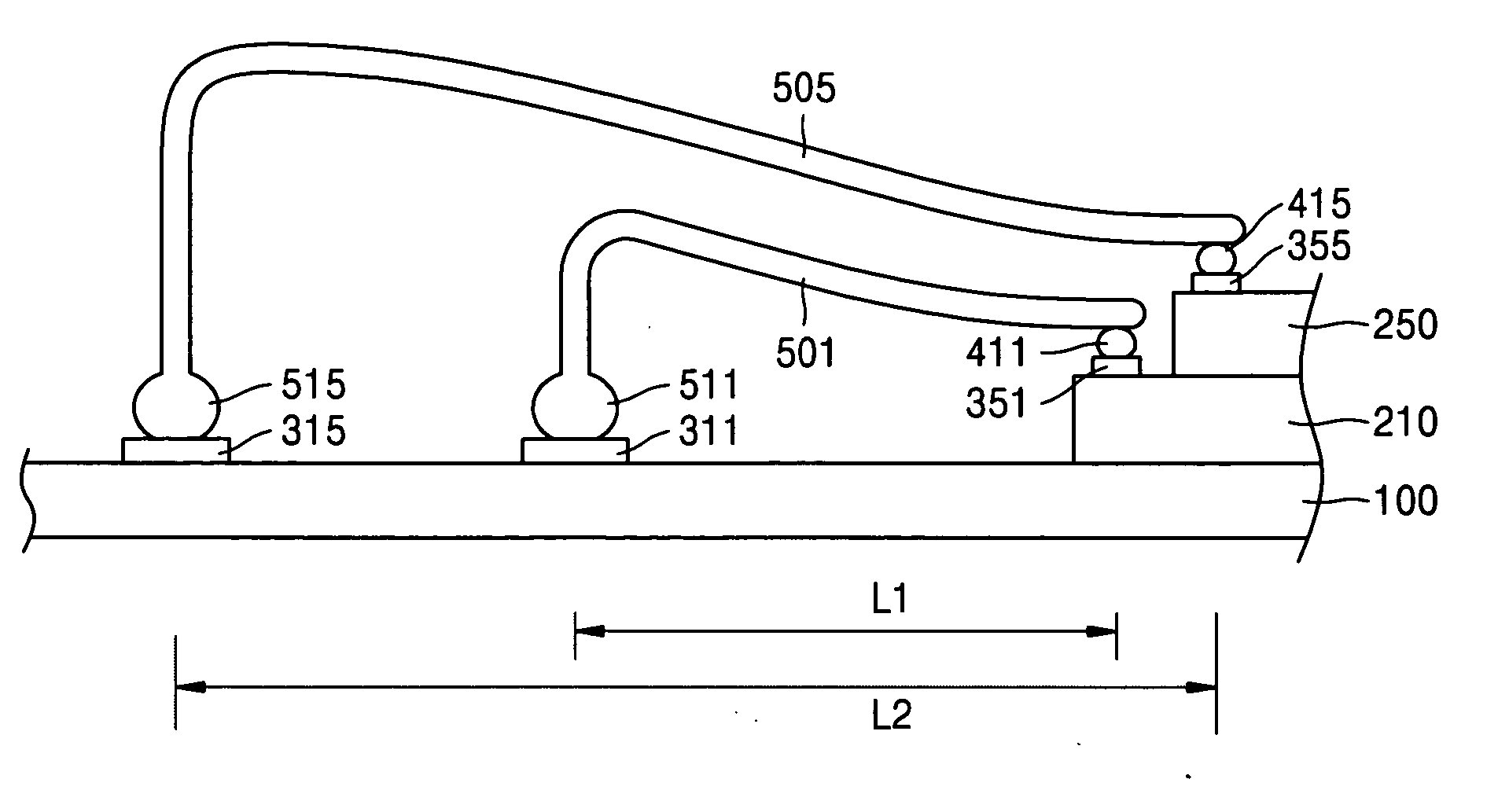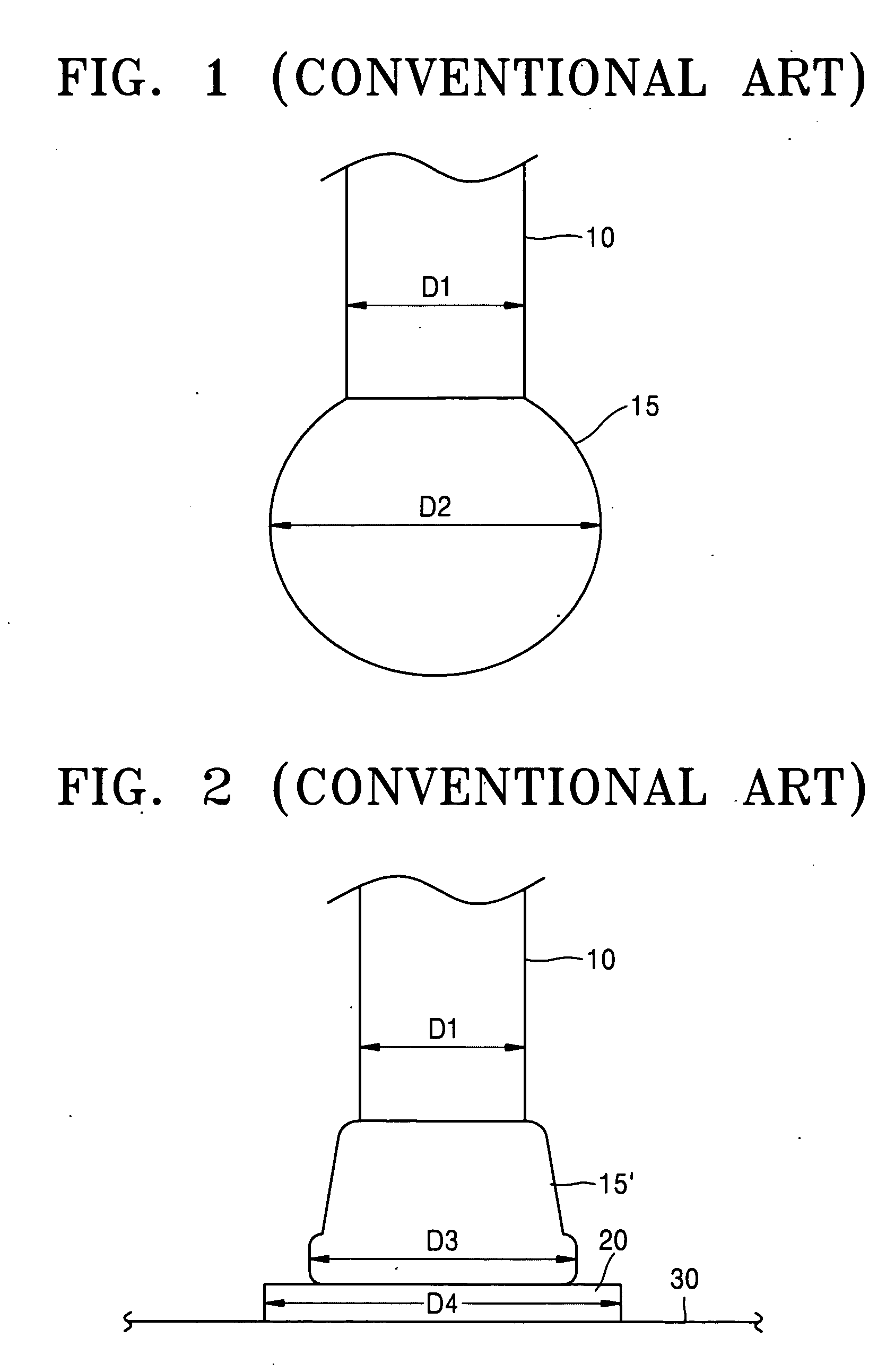Method and apparatus for bonding a wire
a wire and wire bonding technology, applied in electrical equipment, semiconductor devices, semiconductor/solid-state device details, etc., can solve the problems of unfavorable wire bonding, wire may be swept, and the diameter of the wire used for wire bonding is increased, so as to achieve the effect of increasing the diameter of the wire required
- Summary
- Abstract
- Description
- Claims
- Application Information
AI Technical Summary
Benefits of technology
Problems solved by technology
Method used
Image
Examples
Embodiment Construction
[0051] Exemplary embodiments of the present invention will now be described more fully with reference to the accompanying drawings, in which exemplary embodiments of the invention are shown.
[0052] In at least one exemplary embodiment of the present invention, a small pitch bump may be formed on a pad of a semiconductor chip, and a wire is reversely bonded to the fine pitch bump by a stitch bonding method. With the high integration of semiconductor devices and downscaling of design rules, a wire of sufficient diameter can be used for wire bonding without being limited by the size of the chip pad, even if the size of the chip pad is fine. As a result, when a wire with a small diameter is used, the wire will not bend or be prone to sweeping.
[0053]FIGS. 5 and 6 illustrate a method of bonding a wire on a fine pitch bump using reverse bonding according to at least one exemplary embodiment of the present invention.
[0054] Referring to FIGS. 5 and 6, a reverse wire bonding method may be p...
PUM
 Login to View More
Login to View More Abstract
Description
Claims
Application Information
 Login to View More
Login to View More - R&D
- Intellectual Property
- Life Sciences
- Materials
- Tech Scout
- Unparalleled Data Quality
- Higher Quality Content
- 60% Fewer Hallucinations
Browse by: Latest US Patents, China's latest patents, Technical Efficacy Thesaurus, Application Domain, Technology Topic, Popular Technical Reports.
© 2025 PatSnap. All rights reserved.Legal|Privacy policy|Modern Slavery Act Transparency Statement|Sitemap|About US| Contact US: help@patsnap.com



